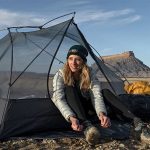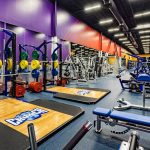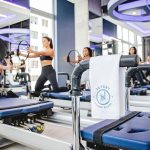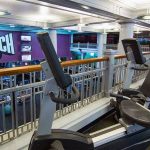Quiksilver reported sales of its DC brand fell by 25 percent in the fourth quarter ended Oct. 31 compared with the fourth quarter of 2012, but expects to reverse the trend next fall by lowering prices below $50 for many of the brand’s shoes.
The action sports apparel and footwear company said sales of DC-branded products decreased $47 million, or 25 percent in currency-neutral (c-n) terms, to $139 million during the quarter and ended the year at $542 million, down 8 percent c-n. Sales were off sharply in the Americas, less so in Europe and grew elsewhere. Quiksilver President and CEO Andy Mooney said he expects the launch of a more affordably priced shoes next fall will halt the decline.
“The key to DC footwear is really to reengineer the line, to get into the sweet spot of price,” Mooney said during an earnings call with analysts last week. “There are 120 million pairs of accessibly priced vulcanized canvas footwear sold annually, and by accessibly priced, I mean the products that retail in the $45 to $49 price zone. Our line today starts at $55. So we sell 4 million pairs of vulcanized canvas footwear, out of a 120 million-plus market. The reason we sell such a small number is because we're outside the price zone.”
DC was not the only business to decline in the fourth quarter in c-n terms. Revenues from the Quiksilver and Roxy brands were flat at $190 million and $137 million in the fourth quarter and off 7 and 2 percent respectively for the full fiscal year. Total revenues reached $476 million, down 9 percent. Revenues decreased 14 percent to $223 million in the Americas and 9 percent to $168 million in Europe, but increased 9 percent in APAC, where they reached $83 million. Revenues from emerging markets – Brazil, Mexico, Korea, China, Indonesia, Taiwan and Russia – grew 32 percent c-n.
Wholesale revenues decreased 12 percent c-n to $353 million, while retail revenues increased slightly to $107 million thanks in part to a 22 percent increase in e-commerce revenues, which reached $16 million. Same-store sales in company-owned retail stores were flat. The company owned 631 retail stores at the end of fiscal 2013 compared with 605 at the end of fiscal 2012.
Gross margin increased 140 basis points to 47.0 percent of net revenues, due to gross margin improvement in the EMEA region, partially offset by a modest decline to gross margin in the APAC region. If not for one-time restructuring costs, gross margin would have risen 190 basis points.
SG&A expense decreased 3.0 percent, or by $7 million, to $220 million, primarily due to lower spending on employee compensation, marketing and administration.
Pro-forma Adjusted EBITDA from continuing operations increased to $35 million from $32 million. Net loss from continuing operations soared to $174.8 million, versus a net loss of $400,000 a year earlier. The change was due primarily to a $157 million non-cash charge related to recording valuation allowances against certain deferred tax assets in the company’s EMEA segment. Such allowances produced an income benefit of $10 million in the fourth quarter of 2013.
Excluding that and other non-cash charges and non-recurring events and special charges, ZQK reported a pro-forma loss from continuing operations of $7 million compared with $8 million a year earlier.
“We continue to see very slow erosion in the specialty core surf and skate chain worldwide, offset by pretty robust growth in emerging markets, particularly for us, Russia, Brazil, Mexico, and Southeast Asia, and even Japan this quarter,” said Mooney. “Definitely the small independent operators are much more challenged than they've ever been to date. And we're seeing, I'd say, some modest contraction in that channel, but it's rotating into other channels.”
In Europe, those other channels include Decathlon and Surfdome, an online store Quiksilver is divesting. In the United States, Amazon and eBay are capturing more sales.
While declining to comment on the current quarter, Mooney affirmed ZQK’s fiscal 2016 revenue target of $2.2 billion. He said the company can to grow revenue by $400 million in the next three fiscal years by increasing emerging market sales, boosting the Quiksilver brand’s fall/winter business in North America, expanding Quiksilver footwear into the closed-toe segment of the market, extending Roxy beyond surf and snow into other active categories and expanding DC’s apparel offering.
In the developed markets, Mooney sees growth coming from taking market share in the core surf channel, as it has done in Europe against Billabong. Margin improvement will come from boosting the ratio of direct sales, SKU rationalization, supply chain improvements and fixing inefficiencies in the wholesale sales channel.
“There's historically been a significant drain, if you like, between initial gross margin and final gross margin, in the form of inefficiencies that's really in wholesale sales channel,” Mooney explained. “Discounts, returns to stock, any number of holes in the bucket, if you like.”
“There's historically been a significant drain, if you like, between initial gross margin and final gross margin, in the form of inefficiencies that's really in wholesale sales channel,” Mooney explained. “Discounts, returns to stock, any number of holes in the bucket, if you like.”
ZQK will roll out changes in its wholesale sales organization to address those issues starting next fall in North America.















